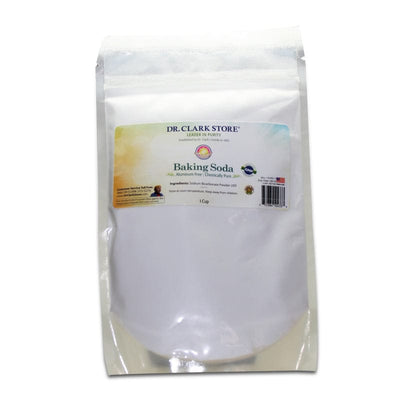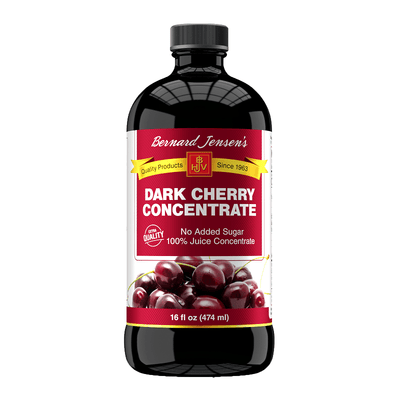One of the Best Probiotic Species for a Healthy Gastrointestinal Microbiome

Our GI system is composed of innate and active immune system, composed of immune cells that line the gut epithelium containing specialized receptors, such as toll-like receptors (TLRs) and nucleotide building domain receptors. While effector T-cells release TNF-a and interleukins, regulatory T-cells secrete interleukin-10 transforming growth factor beta. Crohn’s disease is thought to be caused by a hypersensitivity to the lipopolysaccharides created by pathogenic bacteria, and may be caused by the progression of granulomas. Fistulas and ulcers occur when lesions created by granulomas burrow into the mucosal and submucosal layers, and penetrate the gut wall. This can occur anywhere in the small bowel or proximal colon and lead to disorders like IBS and leaky-gut-syndrome.
What are Granulomas?

Granulomas are small areas of inflammation that are created when the immune system is unable to contain or destroy an infectious or foreign agent. They are composed of macrophages, involving a subtype of helper T-cell. The two types of granulomas are caseating, meaning that have an encased core with outer layer of macrophages and helper- t-cells (usually caused by fungal infections and TB) and noncaseated, which are granulomas that have no central core, and are seen in Chron’s disease and other conditions like Sarcoidosis, a lung disease of unknown origin but hypothesized to be caused by chemicals in dust, or an abnormal reaction to the body’s own proteins (2).
Some Causes of Granulomas:
- Irritating substances like silica in talc powder, and tatoo ink
- Collagen or steroid injections
- Stiches and splinters
- Chronic infections
The Microbiome
The human microbiome consists of around 100 trillion bacteria and is composed of over 500 species that work together to support each other and the host in a symbiotic relationship. This ecosystem regulates the digestive and immune system by releasing antibody peptides, secreting IgA, and other antimicrobials. Microorganisms in the gut coordinate nutrient absorption processes and competition for adhesion sites. Microbiome balance “is essential in order to avoid the onset of inflammatory intestinal diseases, including cancer and extra intestinal diseases” (4).

Immune defenses in the small bowel and colon depend upon probiotic microorganisms, which not only create a variety of immune compounds and nutrients, but also protect the epithelial barrier against pathogenic infections of the type that cause granulomas and a reduced intestinal barrier. Candida species are known to cause the formation of granulomas within days of becoming pathogenic, consisting of hypha formation and rapid growth (3). “During invasive candidiasis, at-risk patients develop suppurative inflammation with rare granulomas lesions in different organs…[such as] the liver, spleen, kidneys, and brain” (3). The authors explain that Candidiasis results in the kind of non-necrotizing granulomas seen in bacterial infection.
Lactobacillus rhamnosus
Lactobacillus rhamnosus has been one of the most studied probiotic organisms due to its range of positive effects. In infants, it was found to promote the beneficial colonization of bifidobacteria, and increased species diversity. It has been widely chosen as a probiotic to treat intestinal infections and reduce the symptoms of irritable bowel disease, and clinical trials have found that it reduced incidence of recurrent C. difficile, and clear antimicrobial resistant enterococci in all patients in a double-blind, placebo-controlled study (8). It also was effective in reducing the risk of respiratory tract infections, and pneumonia, pulmonary exacerbations, and allergies (7). Regarding cooperation, this bacteria produces quorum sensing molecules that facilitate communication and cooperation among other beneficial species.
Effectiveness Against Candida
Previous research indicates that Lactobaccillus species are able to prevent and remediate candida infections such as vulvovaginal candidiasis by stopping proliferation, hypha formation, and even biofilm formation (1). A 2022 multi-omics study on the interaction between L. rhamnosus and C. albicans fungal species found that it reduced candida overgrowth in a number of ways (1). One, it reduced the number of available glucose sources that C. albicans uses for fuel, decreased available nitrogen, carbon and phosphorus sources for C. albicans. Using transcriptional profiling, they also discovered that L. rhamnosus is able to force C. albicans to alter expression of genes related to virulence, reducing pathogenesis.
“Lactobacillus Rhamnosus GG also interacts with intestinal immune system (MALT). For example it is able to increase the number of IgA and other immunoglobulins secreted by the intestinal glands 73. In particular it modulates the antigen recognition by the intestinal lymphoid tissue at the level of Peyer’s patches and it reduces the levels of proinflammatory cytokine TNF-α 14. Further studies showed a role of Rhamnosus also in improving the permeability of intestinal barrier.” (4).
Further research has shown that L. rhamnosus was able to suppress edema induced by the carcinogen carrageenan, as well as reduced inflammatory cytokines (5). One of the reasons for the effects of L. rhamnosus is that it has a high mucus-binding ability in the intestines, compared to other probiotic strains, and can survive to reach the colon, and due to its wide ability to distribute to other areas than the intestine, can also be found in the tonsils, vagina, and oral mucosa.
Should Anyone Avoid Probiotics?
While probiotics, especially when in combination, cause no adverse reactions in the vast majority of people, certain groups depending on their individual microbiomes, could experience adverse events, such as reduced intestinal barrier and immune function. Although very rare, this is possible with patients who have already-compromised intestinal barrier that may allow translocation of L. rhamnosus into the bloodstream, which can cause sepsis. However, in general, the administration of individual probiotic strains can be an effective therapy for many disease states, and L. rhamnosus ranks among the best in both its individual effects and its ability to improve the community of microbiota.
References
1). Alonso-Roman, R., Last, A., Mirhakkak, M. H., Sprague, J. L., Möller, L., Großmann, P., ... & Gresnigt, M. S. (2022). Lactobacillus rhamnosus colonisation antagonizes Candida albicans by forcing metabolic adaptations that compromise pathogenicity. Nature Communications, 13(1), 3192.
2). https://www.mayoclinic.org/diseases-conditions/sarcoidosis/symptoms-causes/syc-20350358
3). https://journals.asm.org/doi/pdf/10.1128/iai.00807-16
4). Tomasello, G., Bellavia, M., Palumbo, V. D., Gioviale, M. C., Damiani, P., & Monte, A. I. L. (2011). From gut microflora imbalance to mycobacteria infection: is there a relationship with chronic intestinal inflammatory diseases?. Annali italiani di chirurgia, 82(5), 361-368.
5). Amdekar, S., & Singh, V. (2016). Studies on anti-inflammatory and analgesic properties of Lactobacillus rhamnosus in experimental animal models. Journal of Complementary and Integrative Medicine, 13(2), 145-150.
6). http://www.ncbi.nlm.nih.gov/pubmed/17484706?dopt=Abstract
7). Seger, M. Lebeer, Sarah. Towards a better understanding of Lactobacillus rhamnosus GG - host interactions. Microbial Cell Factories. 2014.
8). Manley KJ, Fraenkel MB, Mayall BC, Power DA: Probiotic treatment of vancomycin-resistant enterococci: A randomised controlled trial. Medical Journal of Australia 2007, 186:454-45.
9). Kunz AN, Noel JM, Fairchok MP: Two cases of Lactobacillus bacteremia during probiotic treatment of short gut syndrome. J Pediatr Gastroenterol Nutr 2004, 38:457-458.
10). Image: https://www.researchgate.net/figure/The-human-microbial-dysbiosis-in-human-diseases-Gut-microbiota-is-implicated-in-the_fig1_359066312







Do you sell these probiotics or, where can I get them?
Leave a comment